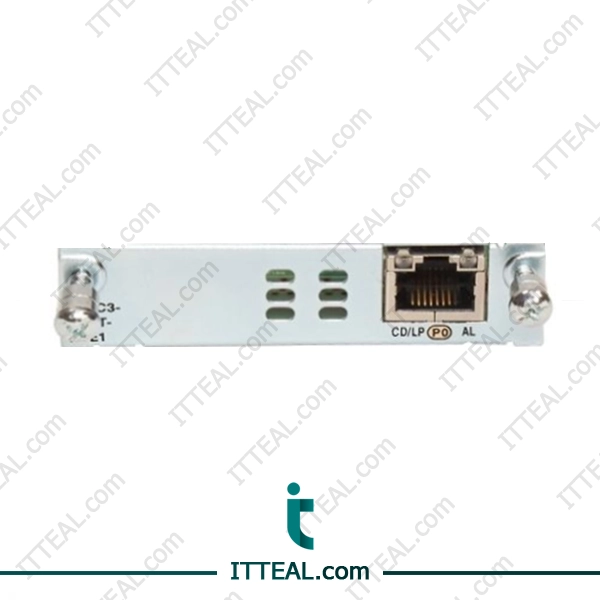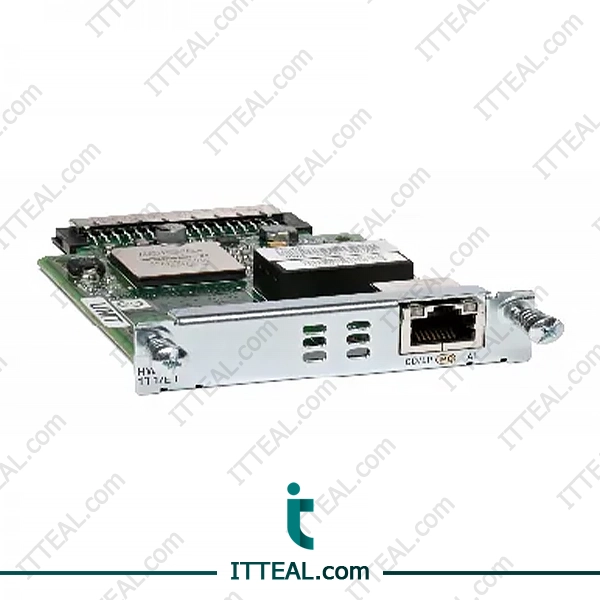Cisco VWIC2-1MFT-T1/E1 Overview
The Cisco VWIC2-1MFT-T1/E1 is a second-generation 1- and 2-port T1/E1 Multiflex Trunk Voice/WAN Interface Card (MFT VWIC2). This card provides versatile WAN and voice connectivity solutions and supports flexible deployment across Cisco’s router platforms. It serves a variety of data and voice applications, making it valuable for businesses seeking to optimize their network infrastructure and reduce costs.
The VWIC2-1MFT-T1/E1 card supports T1 and E1 data applications, including fractional T1 and structured E1 configurations (G.703/G.704). Businesses can manage bandwidth by adjusting data rates to fit network demands, making it suitable for branch office connections and service provider links. Its integrated DSU/CSU capability allows remote management of T1 and E1 circuits, which minimizes the need for on-site maintenance. For applications needing a consistent, unstructured data stream, the card supports G.703 transmission, meeting both North American and international requirements.
Key Features and Capabilities
- Flexible Voice and Data Applications: The Cisco MFT VWIC2-1MFT-T1/E1 enables T1 and E1 digital transmission over a single or dual port, allowing seamless integration of voice and data applications. This flexibility supports simultaneous data and packet voice capabilities, which can help businesses reduce the need for separate voice and data circuits and simplify network architecture. In addition, these cards are designed to work with Cisco’s Integrated Services Routers (ISRs), ensuring compatibility with models such as the Cisco 1841, 2801, 2811, and others, broadening the module’s applicability across network environments.
- Enhanced Echo Cancellation and Signal Quality: Equipped with advanced echo cancellation (ECAN), the MFT VWIC2 cards maintain high-quality voice transmissions, minimizing the impact of delay and line echo common in voice networks. This feature is especially beneficial in packet-switched networks where delays can degrade voice quality. The ECAN option exceeds standard cancellation limits (typically 32ms), improving voice clarity and reliability over longer connections.
- Independent Clocking for Data Flexibility: The VWIC2 cards offer independent clocking options on 2-port versions, an essential feature for applications requiring high data accuracy, such as financial transactions and sensitive data transfers. However, it should be noted that this feature is not available when the cards are used for voice applications due to the synchronous nature of voice data transmission, which requires uniform clocking.
- Drop-and-Insert Multiplexing: Drop-and-insert functionality allows the VWIC2 cards to handle TDM (Time-Division Multiplexing) voice, IP voice, and data concurrently by segmenting and reintegrating data streams. This removes the need for external Channel Service Units/Data Service Units (CSUs/DSUs) and multiplexers, simplifying equipment requirements and reducing network costs. With drop-and-insert capabilities, organizations can consolidate voice and data streams efficiently, reducing both operational complexity and hardware investments.
Applications and Use Cases
The VWIC2 card optimizes voice applications and supports T1 and E1 connections for cost-effective voice and fax services, particularly in VoIP environments. By integrating data and voice transmission, the card supports a gradual migration to converged networks and simplifies maintenance. Cisco IOS software compatibility enhances this by providing quality-of-service (QoS) options that prioritize voice traffic. The drop-and-insert feature enables simultaneous TDM voice, IP voice, and data transmission, simplifying traffic management for high-capacity environments like call centers and financial institutions.
You can also visit the manufacturer’s website link for more information.
You can also visit the Cisco HWIC-1ADSL-M , Cisco HWIC-1T , Router Card pages if you wish






Reviews
There are no reviews yet.